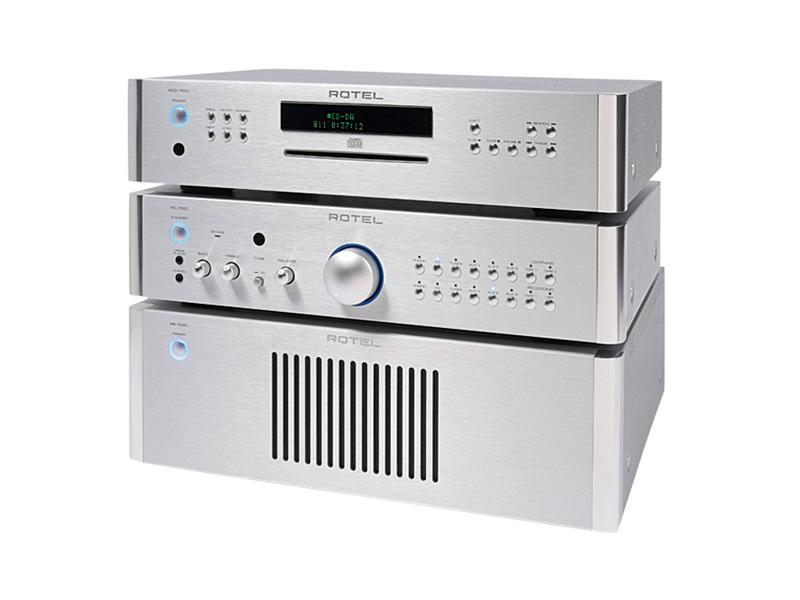TechRadar Verdict
CD player lacks optical digital output, which might upset some users, but its feature count is otherwise fine and sound quality is expressive and open. Well-endowed and powerful amplifiers, the only caveats concern the upfront balance, occasionally harsh treble and what was perceived as a lack of depth
Pros
- +
RCD-1520
- +
Feature count is decent
- +
Sound quality is expressive and open
- +
RC-1580 and RB-1582
- +
Well-endowed and powerful
Cons
- -
RCD-1520
- -
CD player lacks optical digital output
- -
RC-1580 and RB-1582
- -
Upfront balance
- -
Occasionally harsh treble
- -
What was perceived as a lack of depth
Why you can trust TechRadar
Rotel have upgraded their line-up and the new models are known collectively as the 15 series, which includes the RCD-1520 CD player and integrated amplifier, two preamps and two power amps.
Here we look at the RCD-1520 CD player and the senior of the two pre and power amplifiers, the RC-1580 and RB-1582, which cost a little under £2,800 in combination.
Not cheap then, but a long way from the high end. Each of the components tested is available in brushed silver or black, while highlights of the series include the so-called Balanced Design concept, a 'disciplined synthesis of physics, electronics and mechanical engineering', though there's little to indicate what this means.
Rotel points to particular care over parts selection, to the extent of avoiding surface-mount components as far as possible, because component substitution of SMD's is hard work. The circuit layout attracts another jargon phrase – Symmetrical Signal Trace, meaning that the individual channel layouts are identical, to preserve imaging and soundstaging.
Star-grounding is also used, wherever possible and Rotel lays great stress on evaluating circuits by ear. Looking at each of the three components individually, the power amplifier employs a segmented (multi-section) power supply with a large transformer to minimise hum and to guard against voltage drop under operational conditions. Rectifiers, voltage regulation and storage capacitors are selected for tolerance and sound quality.
With the CD player, Rotel specifies Wolfson for D/A conversion and digital filtering, which has a strong reputation for sound quality, along with Burr-Brown op-amps.
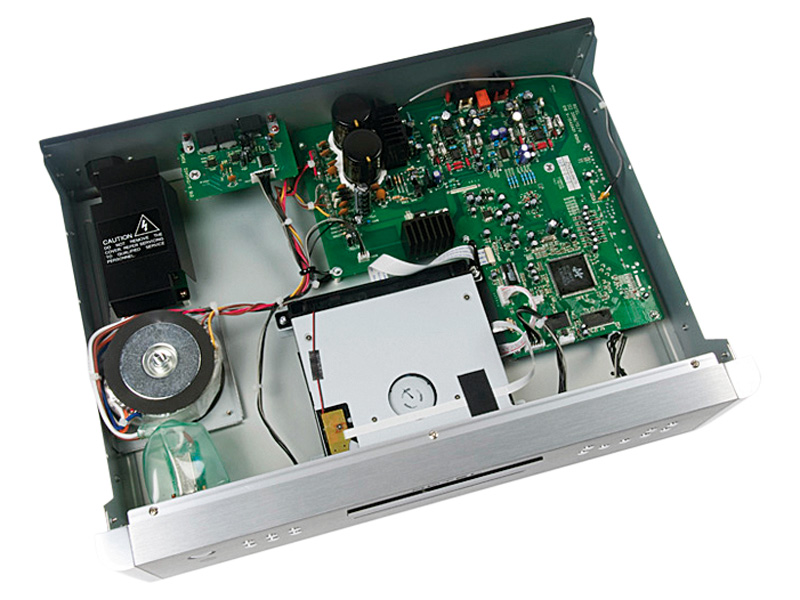
SLOT LOADING: The smooth slot loading design is completely trouble free
Sign up for breaking news, reviews, opinion, top tech deals, and more.
The RC-1580 is powered by an 'oversized' transformer, with UK-made electrolytic capacitors from BHC. A low-noise differential mode MM/MC phono input is included, along with a unity gain stage to allow a surround sound processor to be patched in, bypassing the volume control. Another highlight is that the design is intended for the world of custom install, with an infra red input and an RS-232 interface.
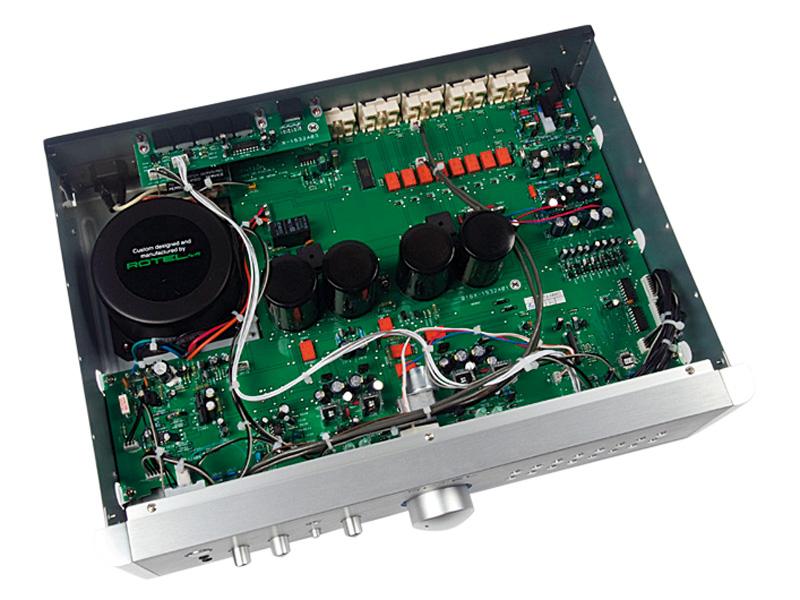
TRANSFORMERS: Here you can see the oversized transformer and the electrolytic capacitors
The RB-1582 is a well-specified power amplifier. It is heavy, thanks to the large onboard power supply and is capable of delivering 200 watts per channel from its bipolar class A/B output stage. Once again, an IR input is fitted and the amplifier has 12 volt triggers. The three components look very clean, largely because of the bright aluminium finish and more generally due to care over attention to detail.
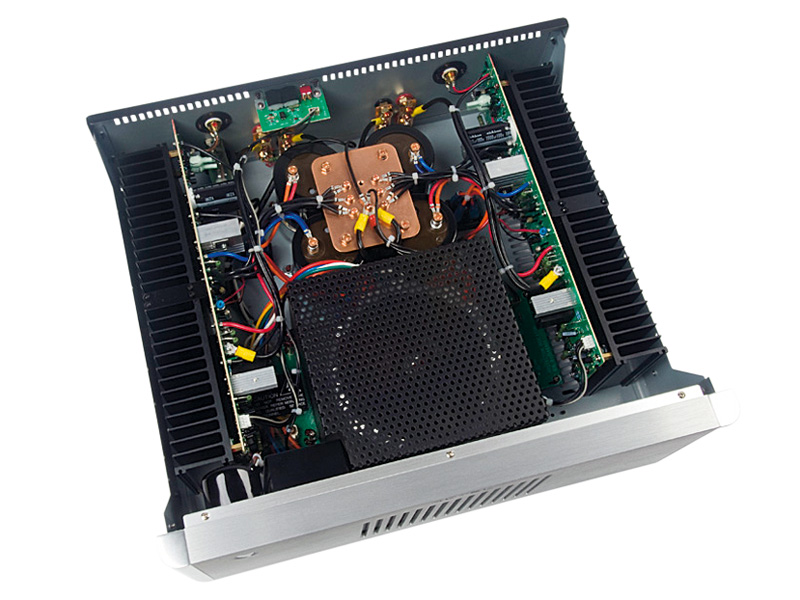
POWER AMP: The torodial transformers inside these components are a custom design exclusive to Rotel
The slot-loading CD player mechanism is smooth and completely trouble-free, making it a slightly simpler operation than a player with a drawerloader. The socketry on the various back panels was of a decent quality, especially so in the case of the power amp's loudspeaker terminals.
The latter has straightforward line inputs and four-millimetre binding power outputs, the only extras being 12-volt in and output trigger sockets.
Predictably, the preamplifier is more elaborate. It too, has remote control in and outputs and two 12 volt triggers, so the whole system can be woken up by the pressing of a single remote control button.
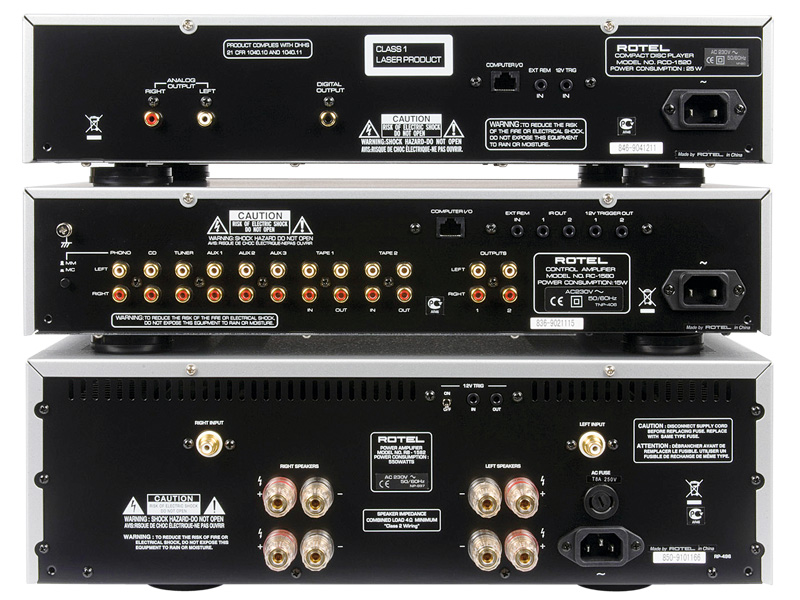
THE FULL MONTY: Here you can see the full I/O for the system fully equipped with 12V triggers
Sound quality
On the whole, this is a fine combination, individually and collectively, but don't make the mistake of thinking that its qualities are evenly spread. The Rotel combo's main strengths are its forward, punchy sound, which help it to seem alive and agile.
On the minus side, the amplifier in particular, can sound raw and aggressive. The treble tends towards being bright and edgy too, which is particularly noticeable with other system components that err in the same direction.
The Cabasse ENC-1050, a medium-size standmount two-way speaker is a particular offender with the Rotel amplifier when compared to the system that had been built around it a few days earlier – comprising a Denon DCD-SA1 and a Belles IA-01 integrated amplifier.
This last is a high-grade, £4,000 design which is undergoing sea trials preparatory to an upcoming review. And yes, these components are way out of Rotel's league, but were on hand for a different purpose.
It seemed appropriate, therefore, to compare the Rotels to something as near as we could contrive to an absolute standard of excellence. It is extraordinary how different two amplifiers can sound. In addition to the forward mid/upper balance and the treble's propensity for sounding raw and edgy by the best standards, the Rotel's bass is also balanced on the lightweight side of normal, its definitely thinner and less muscular than with the other test system and this (please note) was through the same loudspeakers.
There is also a clear difference in the way timing cues were handled by the two reproduction chains and the Rotel lacks the obvious sense of depth that is part and parcel of the Belles amplifier. But the Rotel pre/power is still a good amplifier. Especially when driving speakers that are a little easier to cope with, our longterm Yamaha and Monitor Audio models proving the point.
In most cases it is convincing, even the forward-sounding balance had a positive effect by helping the system sound punchy and dynamic. But it's the CD player that impresses us most of all. It still has a trace of what was sounding suspiciously like the Rotel 'house sound'. It is a little forward in balance, though only a little, but it is also surprisingly sweet and open-sounding.
Image depth is impressive and lateral soundstaging is expansive. It 'breathes' in a way that contrasts favourably with other similarly priced players. We also discovered that the Rotel player copes surprisingly well with marked and damaged discs. It seems that a slot-loader doesn't have to compromise usability, which is an obvious danger, though it is worth practicing handling dics carefully to avoid getting finger marks over the surface.
Although the amplifier has attracted some mild opprobrium in this test, it works well on the whole, but it was quickly apparent that the real star here is the CD player, which at the asking price is clearly rather special.
Overall, the combination is tonally on the lightweight side of neutral and there's a hint of untidiness, yet the presentation is also dynamic, colourful and vivid.
Individual Scores
RCD-1520: 5/5
RC-1580 and RB-1582: 4.5/5
Follow TechRadar reviews on Twitter: http://twitter.com/techradarreview
